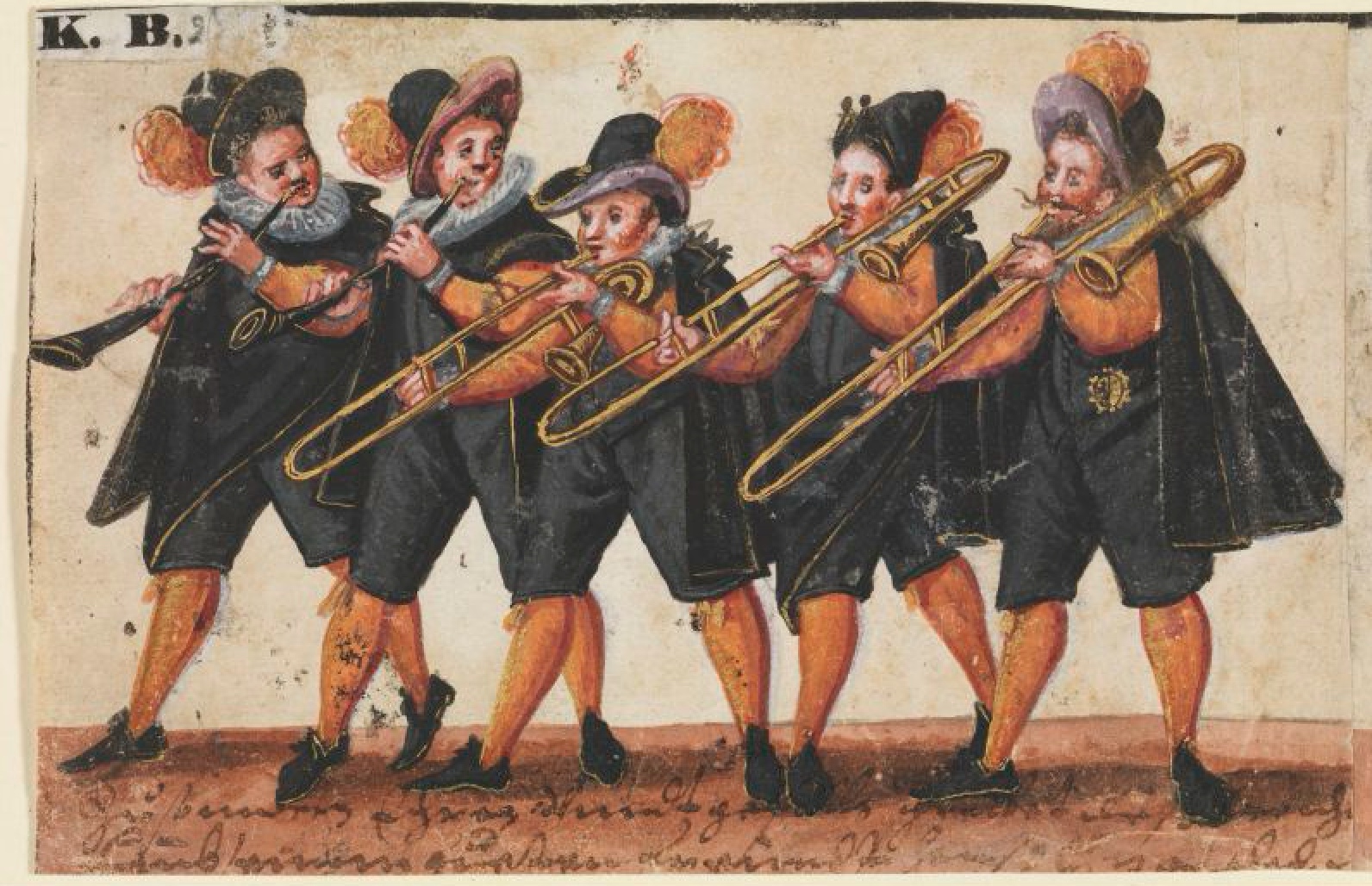c. 1550—Abran writes Tant vous alles doux, Guillemette a 6, for 2 cornetts and 3 trombones (Collver 40).
1599—London, England: Antony Holborne composes Pavans, Galliards, Almains, and other short Airs both grave, and light, in five parts, for Viols, Violins, or other Musicall Winde Instruments. Based on the title, which specifies Musicall Winde Instruments, the pieces are presumably performed in various combinations that likely include trombone (Boyd 163).
1611—Milan, Italy: Ottavio Bargnani’s Canzon a5 “sopra la Monica,” from his Secondo libro delle canzoni da suonare, is based on the popular song La Monica.
1617—Leipzig, Germany: Johann Hermann Schein’s Banchetto musicale (1617), a collection of instrumental dance suites for unspecified instruments (alto, tenor, bass, and two treble instruments), the trombone is historically and technically suitable for playing the alto, tenor, and bass parts.
1621—London, England: John Adson, a London wait, composes Courtly Masquing Ayres composed to 5 and 6 Parts for Violins, Consorts, and Cornets. Three of the 5-part works (airs 19, 20, and 21) are specifically scored for “Cornets and Sagbuts” (Collver 40; Boyd 163; Whitwell, Catalog Baroque 12).
1641—Johann Vierdanck (c.1605-1646) calls for trombone in several works contained in the collection Erster Theil newer Pavanen, Gagliarden, Balletten und Correnten, including Sonata Worin die Melodia des Liedes, a sonata for 2 cornetts and 3 trombones (Collver 72).
1654—Stade, Germany: Hans Hake writes for 3 trombones, 2 cornetts, and continuo, in Arias 37, 38, 39, and 40 of his Ander theil neuer Pavanen, Sonaten, Arien, Balletten, Brandlen, Couranten, und Sarabanden (Collver 52).
1659—Germany: Andreas Hammerschmidt writes Jauchzet ihr Himmel, which contains a Sinfonia for 3 trombones and 2 cornetts (Whitwell, Catalog Baroque 129).
1661—England: Matthew Locke (c. 1621-1677) composes Music for his Majesty’s Sagbutts and Cornetts, possibly for the coronation of Charles II. The music is a collection of pieces for 2 cornetts and 3 trombones (Herbert, Sackbut 79; Collver 58).
1661—England: Charles Coleman, 5 “Partt things ffor the Cornetts” contains 4 pieces, Almand, Courant, Shortt Almand, and Saraband, all for 2 cornetts and 3 trombones (Collver 48).
1670—Germany: Johann Christoph Pezel writes Hora decima musicorum Lipsiensium, a collection containing 40 sonatas for 2 cornetts and 3 trombones. A later edition, published in 1674, gives the possibility of alternative strings in place of cornetts and trombone. Like his Fünff-stimmigte blasende Music collection, the music is intended for the Stadtpfeifer, or town musicians (Collver 63).
1685—Germany: Johann Christoph Pezel writes Fünff-stimmigte blasende Music, a set of 76 dance pieces for 2 cornetts and 3 trombones. Like his Hora Decima collection, it is intended for the Stadtpfeifer, or town musicians (Collver 63).
1685—Germany: Daniel Speer, a former Stadtpfeifer, writes Recens fabricatus labor, oder neugebachene Taffel-Schnitz, which includes two sonatas that call for 2 cornetts, 3 trombones, and continuo (Collver 68).
1688—Germany: Daniel Speer’s collection, Musicalisch-Türckischer Eulen-Spiegel, includes three sonatas that specify 2 cornetts and 3 trombones (25, 29, and 30) (Collver 69).
